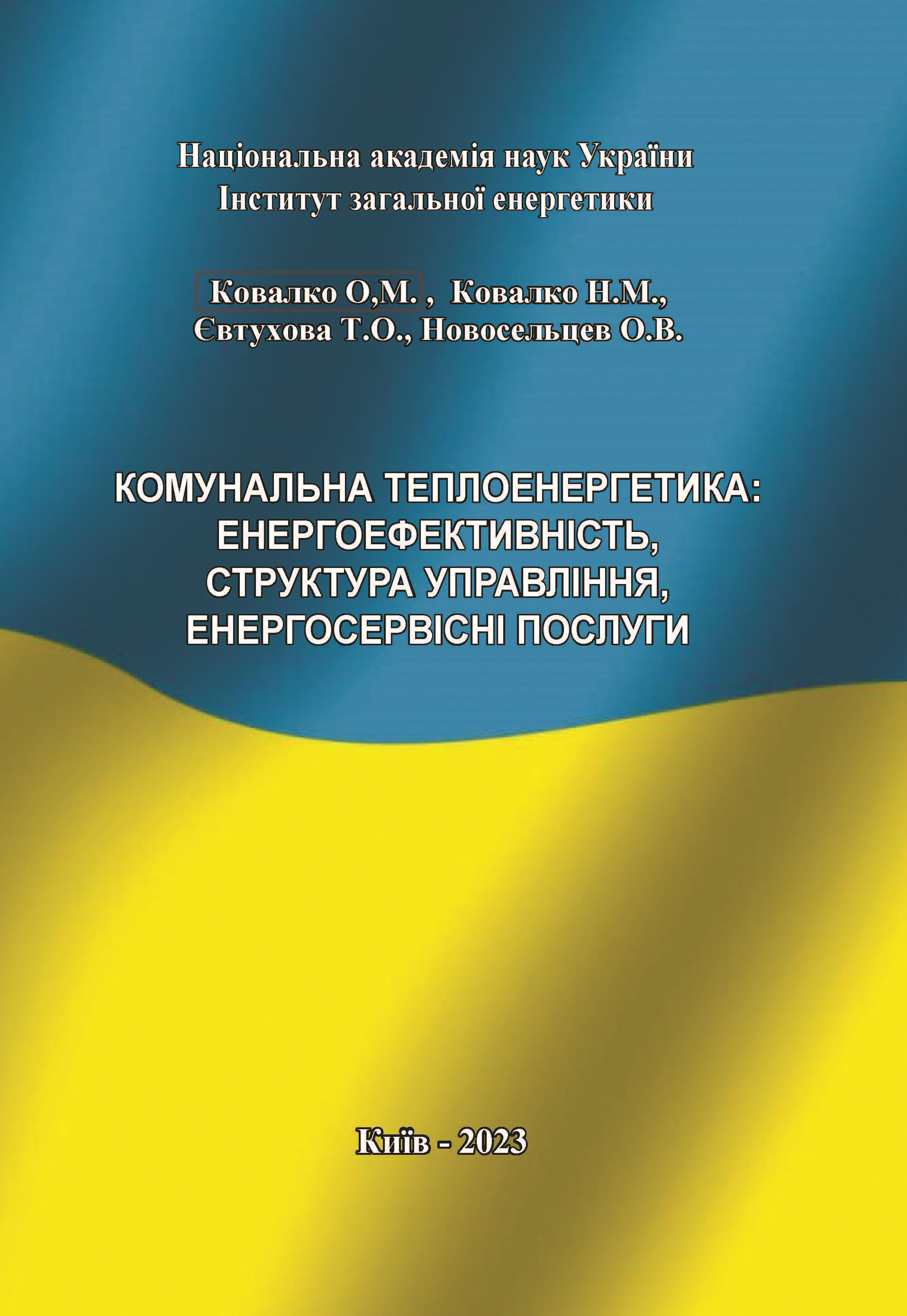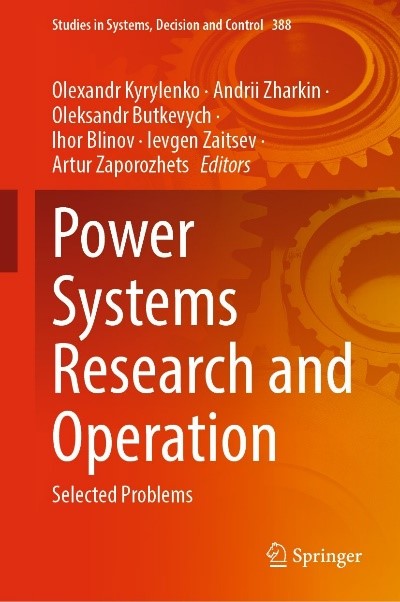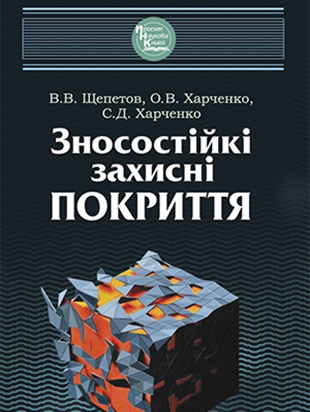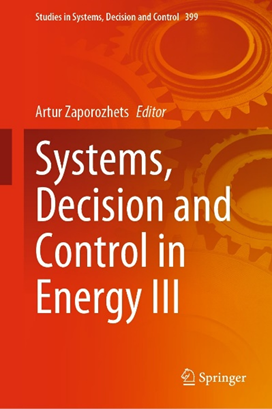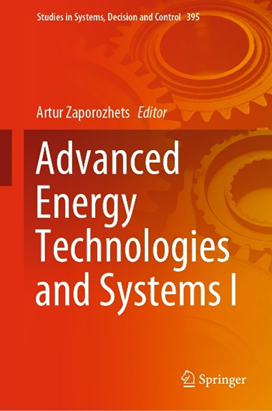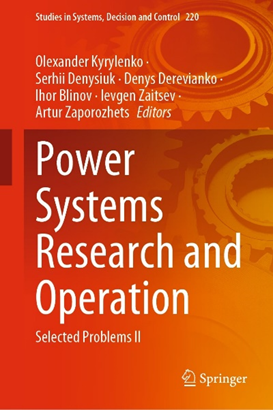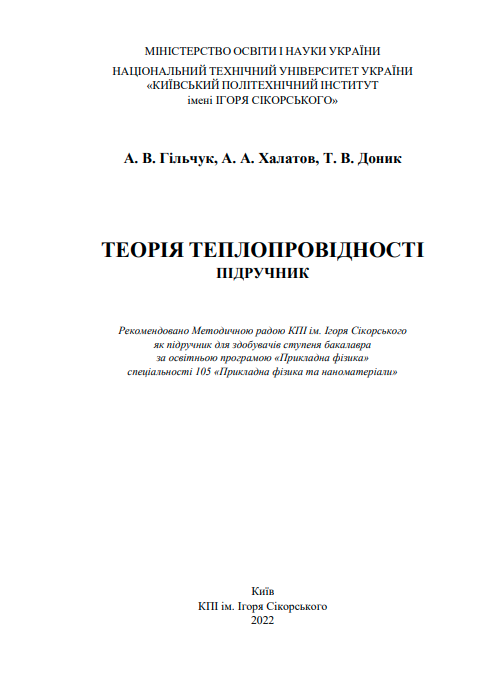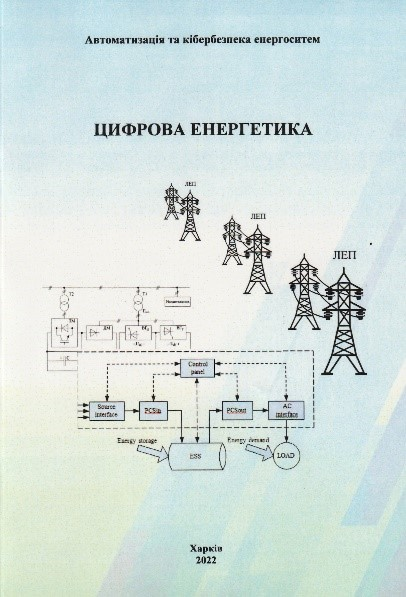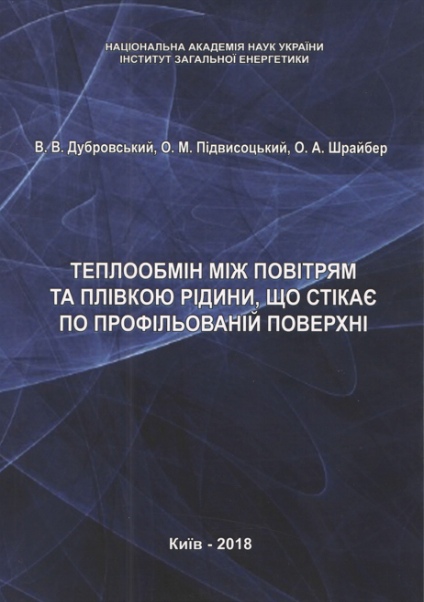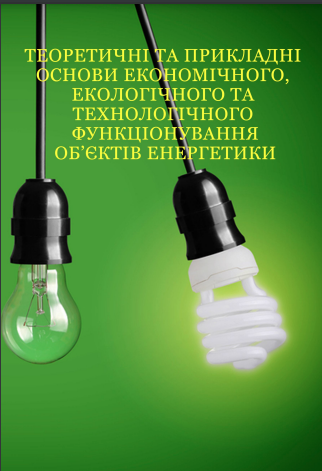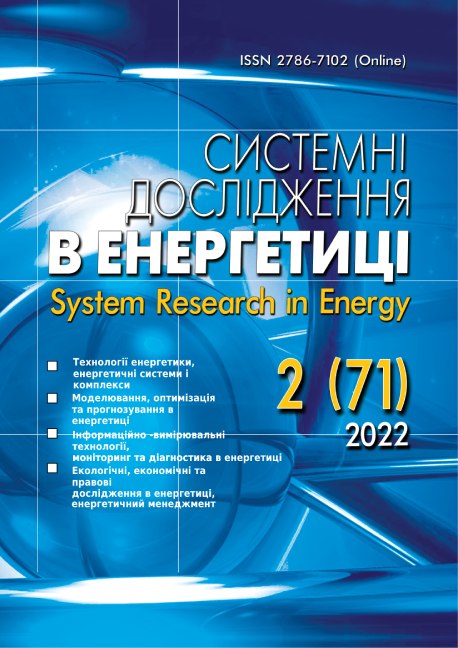2025

Today, the issue of energy saving and energy security is of particular relevance both locally and globally. Today, the world is facing an acute problem of saving and rational use of energy resources in order not only to reduce their consumption but also to reduce pollutant emissions. For Ukraine, the issue of energy security has become particularly acute since the beginning of Russia's hybrid aggression. The destruction of energy infrastructure, the threat of disruption of energy supplies, and aggressive actions in the economic sphere are driving Ukraine to improve energy efficiency along the chain from production to consumption and to develop modern energy-saving technologies. According to the European Parliamentary Research Service, households are the largest energy consumers in Europe, with final energy consumption accounting for 28% of the total energy consumption of all sectors. That is why researchers are focused on implementing resource-saving activities through the use of modern energy-efficient technologies in households and buildings, in particular, to reduce transmission and infiltration heat losses. To determine the extent of heat transfer losses, it is common to measure the thermal resistance of buildings on site. These measurements are usually made by analysing the low-density heat flux. To monitor the thermal insulation characteristics of building envelopes and materials used in repair work and establish their actual values, it is extremely important to develop modern monitoring tools and appropriate methods for measuring thermal resistance as the main indicator in assessing the energy efficiency of buildings.
2024
The book is devoted to the solution of the problem of determining the presence of corona discharge on electrical equipment with acoustic radiation. It is shown that corona discharge leads not only to irreversible losses of electrical energy, but also interferes with the transmission of high-frequency signals, deteriorates insulating elements, can become a source of conditions for the occurrence of a destructive arc discharge and is one of the factors of changing the continuity of the electrical system as a whole. The book describes the processes in a corona discharge that lead to the occurrence of acoustic waves. The authors analyzed acoustic radiation from a corona discharge reproduced in laboratory conditions. The received acoustic signals were processed by Fourier transform. Thus, the features of the spectral function, which belong specifically to the corona discharge in electrical networks with industrial frequency current, were determined. Based on the inverse Fourier transform, a simplified model of the acoustic radiation of the corona discharge was constructed. The authors proposed a method for detecting the presence of a corona discharge based on the spectral characteristics of acoustic radiation. Techniques were developed to determine the presence of a corona discharge for the creation of stationary and mobile devices. The advantages of the method of detecting the presence of corona discharge by the acoustic spectrum are shown. The method makes it possible to determine the presence of a corona discharge remotely, even out of direct sight, regardless of the time of day and regardless of the season. The book states that determining the presence of a corona discharge is not enough, it is still necessary to determine its location. The method of finding the coordinates of the corona discharge as a source of sound was described. Methods of searching for corona discharge coordinates with a fixed scanning device and a moving scanning device are proposed. A UAV is proposed as a mobile platform for the scanning system. The influence of the Doppler effect on acoustic measurements when the UAV speed changes was taken into account. The authors have shown that the use of coronal discharge detection with UAVs will not only enable the prevention of coronal discharge, but also increase the frequency of surface inspections. This will allow timely measures to be taken to improve the reliability of the power system operation. The book is intended for the researchers, postgraduate students and students specialized in theory and calculations of electrical systems.
https://doi.org/10.1007/978-3-031-44025-0
2023
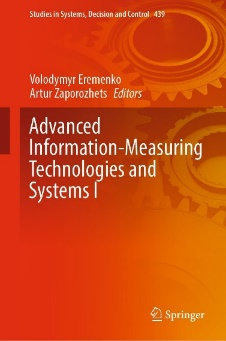
The
book presents the main scientific directions and issues of research conducted in the Department of Information and Measurement Technologies at the National Technical University of Ukraine "Ihor Sikorskyi Kyiv Polytechnic Institute".
The presented results cover almost all scientific directions related to information and measurement technologies—metrological support of measurement channels of information and measurement systems, methods of reproducing units of electric circuit parameters, development of specialized information and measurement systems, mathematical methods of processing measurement information, models of formation of information signals and fields, statistical diagnostic methods, information support of testing, and calibration laboratories.
Books
The e-learning course Probability Theory, Probability Processes, and Mathematical Statistics is intended for students who obtain a bachelor's degree in TNTU with majors 122 "Computer Science" and 126 "Information Systems and Technologies". Contains lecture material, tasks, and examples of laboratory work (text part, video materials, examples of Python programs), and test tasks. They are implemented using LMS ATutor.
2022
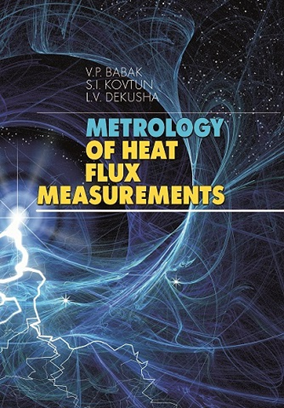
The monograph examines the issues of metrology of heat flux measurements. The results of analytical researches of uncertainty of results of measurement of surface density of a heat stream are presented, the basic physical mechanisms of formation and transfer of unit of measurement of surface density of a heat flux are stated, the modular metrological complex for reproduction of the measurement unit of heat flux and hierarchical scheme for traceability of measurement results are considered.
For researchers, engineers, as well as lecturers and postgraduates of higher education institutions dealing with the problems of thermophysical measurements and thermal energy audit.
Books
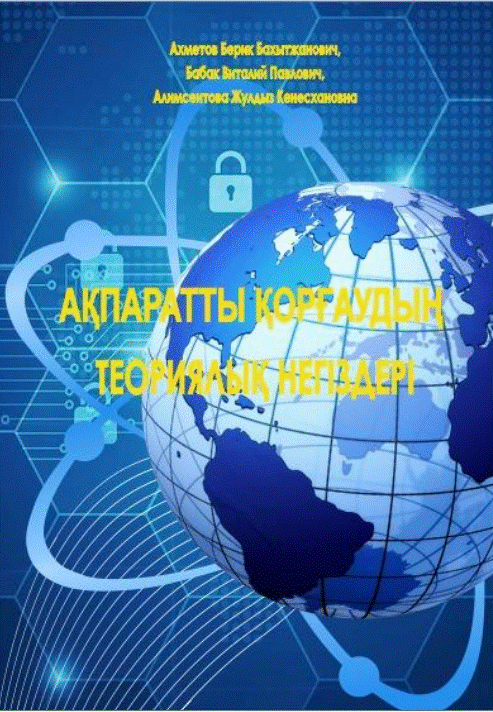
The textbook deals with the mathematical apparatus of transformation and research of information signals, technology of measurement, transmission and processing of information, signals and data, interference-resistant coding, use of modern information and communication channels of information transmission, encryption and reverse encryption algorithms, stegano- and cryptography, digital signature, etc. Basic concepts and methods of information protection are described. In addition to algorithmic and technical methods, protection of confidential and commercial information, protection against unauthorized access, protection of intellectual property, legal protection of information, as well as international standards in the field of information protection are ensured. The textbook is intended for "Informatics", "Training of informatics teachers", as well as students and postgraduates studying in the direction of "Information and communication technologies". The textbook is intended for the educational areas of "Informatics", "Training of teachers of informatics", as well as students and postgraduates studying in the area of "Information and Communication Technologies".
2021
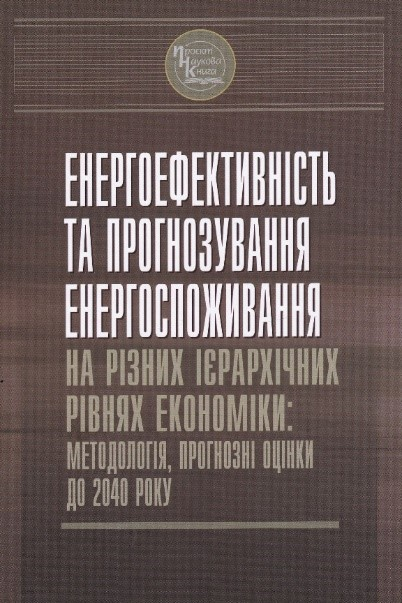
The monograph presents new developments in methods for determining energy efficiency indicators at different hierarchical levels, taking into account the impact of environmental protection factors, and provides methodological approaches to determining energy saving potentials: structural (when changing the structure of the economy as a whole and the structure of industrial sections) and technological (theoretical, technically possible and economically feasible) at different hierarchical levels of the economy.
Improved methods for forecasting the demand for energy resources (normative and direct account) at different hierarchical levels of the economy are proposed and a comprehensive method is proposed to reconcile forecasts obtained at different hierarchical levels on relevant indicators, increase the accuracy of forecasts, and reduce the number of forecast options. Forecast estimates of demand for fuel (in general, coal, natural gas, oil products), electricity, and heat until 2040 are given.
For scientific and engineering workers who deal with the problems of energy efficiency assessment, energy saving, and energy consumption forecasting, as well as for teachers, graduate students, and students in relevant specialties.
2020
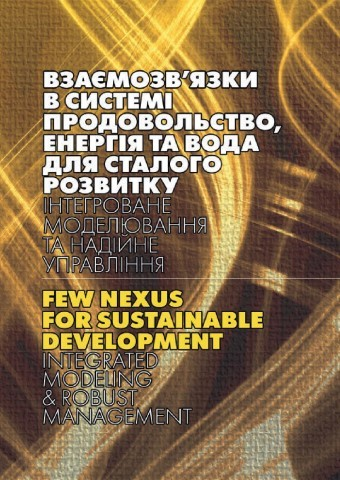
This book comprises research papers, summarizing the results of the joint research Project between the National Academy of Sciences of Ukraine and the International Institute for Applied Systems Analysis, Laxenburg, Austria. The main goal of the book is to present challenging problems of integrated robust management of interdependent food, energy, water, environment, social, and demographic systems for sustainable developments, which cannot be solved by the existing traditional approaches. The project develops a multimodel strategic-adaptive Decision Support System (DSS), which integrates not only national models but also those operating at the global scale, thus enabling to show policymakers the trade-offs and synergies of different policies, allowing for a dialogue between national and international stakeholders. The DSS includes a Data Base and a Toolbox of non-smooth stochastic optimization algorithms for distributed model linkage under asymmetric information, large-scale Machine Learning (ML), and Artificial Intelligence (AI) problems, in particular, deep artificial neural network (DANN) learning.
The book is prepared for scholars and practitioners interested in integrated food, energy, and water modeling and security management for sustainable development.
2018
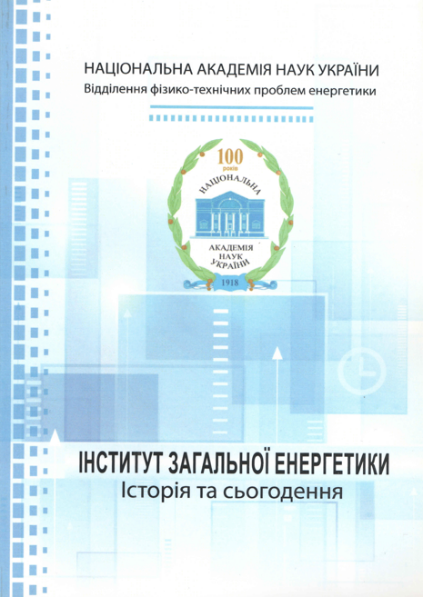
The publication contains materials on the history of the establishment and development of the Institute of General Energy of the National Academy of Sciences of Ukraine. Information is given about the founders, goals of creation, and further development of the Institute, which has become one of the few scientific institutions of the country, at the world level conducts research on complex problems of long-term forecasting of energy development in modern economic, political and international conditions. Data on prominent Ukrainian scientists who worked at the Institute are provided. The most important results of scientific research obtained by scientists of the Institute of General Energy of the National Academy of Sciences of Ukraine, information on important state documents prepared by the team, and the results of international cooperation are presented. For researchers, graduate students and students of energy specialties of higher educational institutions, and all those interested in the history and present of Ukrainian science.
2017
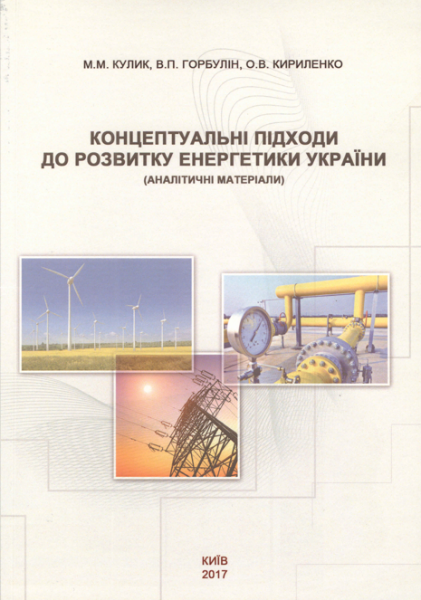
In the presented analytical materials, the results of studies on the assessment of macroeconomic indicators of the development of the branches of the economy of Ukraine are presented, and on their basis, demand forecasts for the main types of energy resources have been developed. The obtained results were used to study the state and develop directions and levels of development of individual sectors of the energy industry for the period up to 2040. Environmental problems, issues of energy security are also highlighted, and the volumes, sources and mechanisms of necessary investment in the energy sector of the country are determined. The publication is intended for specialists who make management decisions on the issues of ensuring the further development of the energy industry, as well as scientific and engineering and technical workers, managers who work in the field of the fuel and energy complex. It can be useful for teachers and students of universities.
2014
Енергетика. Дубовський С.В. Енергоекономічний аналіз сполучених систем генерації електричної енергії і теплоти. – К. – Наукова думка. – 2014 – 186 с. (14,95 ум. друк. арк.) – Тираж 300 прим. – ISBN 978-966-00-1447-3.
У межах термодинамічного підходу наведено нове вирішення наукової проблеми розподілу витрат енергії між продуктами реальних процесів і циклів тепломеханічного перетворення прямого і зворотного спрямування, на яких базується функціонування сполучених систем генерації електричної і теплової енергії – комбінованого виробництва електричної енергії та теплоти, теплоти і холоду з використання електричної енергії. Подано теоретичні засади, методи і засоби визначення енергоємності проміжних і кінцевих продуктів комбінованих виробництв практично важливих типів, агреговані моделі та інженерні методики енергоекономічного аналізу і прогнозування їх розвитку як двопродуктової складової електроенергетичного комплексу.
2013
Енергетитка. Економіко-математичне моделювання енергетичних систем / [Добровольський В.К., Стогній О.В., Костюк В.О., Каплін М.І.]; Ін-т загальної енергетики НАН України – К.: Наукова думка, 2013. – 252 с. (Ум. друк. арк. 20,48; Обл.-вид. арк. 20,0). – 300 прим. – ISBN 978-966-00-1269-1.
У монографії викладено можливості економіко-математичних оптимізаційних моделей виробничого типу, описано з модельної точки зору техніко-економічні особливості функціонування систем енергетики. Наведено приклад побудови балансово-оптимізаційних моделей виробничого типу на основі поняття технологічного способу Канторовича, а також похідної модифікованої моделі Леонтьєва, орієнтованої на цінові розрахунки. Сформовано набори вихідних даних моделей, розраховано обсяги виробництва і споживання електричної енергії й адекватних цін. Викладено результати досліджень ядерно-паливного циклу методами економіко-математичного моделювання та виконано техніко-економічні оцінки вартості електричної енергії АЕС. Подано економіко-математичну модель взаємопов’язаних мережних систем електро- та водопостачання і наведено оцінки впливу режимних та економічних факторів взаємодії мереж на вузлові ціни постачання води та електричної енергії. На CD, що додається, розміщено вихідні набори даних економіко-математичних моделей, результати розрахунків, програмне забезпечення з інструкціями.
2011 рік
Шевченко О.Л., Козицький О.М. , Насєдкін І.Ю. та ін. Закономірності міграції техногенних радіонуклідів на меліоративних системах чорнобильської зони відчуження за результатами досліджень 1986 – 2004 рр.– Херсон: Олді-плюс, 2011. – 416 с.
У написанні Розділу 8.2. цієї монографії «Моделювання перенесення радіоактивних речовин у відкритих водотоках» брав участь ст.наук.спвроб. Інституту загальної енергетики НАН України канд.техн.наук В.П. Сизоненко.
2010
Дубовський С.В. брав участь у виданні колективної монографії «Энергетика: История, настоящее и будущее. Т. 4. Возобновляемая энергетика. Функционирование и развитие энергетики в современном мире» (г. Киев. – ООО Редакция издания «Энергетика: история настоящее и будущее», 2010. – 612 с. – Часть 7. Основные тенденции развития мировой энергетики. – С. 536–597).
2008
Гнедой Н.В., Маляренко Е.Е. Энергоэффективность и определение потенциала энергосбережения в нефтепереработке. Ін-т загальної енергетики НАН України – К.: Наукова думка, 2013. – 182 с. (Ум. друк. арк. 11,5; Обл.-вид. арк. 13,5). – 300 прим. – ISBN 978-966-00-0713-0.
У монографії запропоновано новий підхід до розподілення енерговитрат у комплексному виробництві продуктів із нафти і методичні положення оцінки енергоефективності технологічних процесів для розрахунку потенціалу енергозбереження, що повинно враховуватися при розробці довгострокових проектів розвитку нафтопереробних заводів.
Для фахівців із енергозбереження, а також у нафтопереробній галузі, аспірантів і студентів.
2007
Центром досліджень науково-технічного потенціалу та історії науки ім. Г.М. Доброва НАН України видано монографію «Зведений прогноз науково-технологічного, інноваційного розвитку України на найближчі 5 років та наступне десятиліття».Розділ 7.«Енергозбереження, нетрадиційні та відновлювані джерела енергії, воднева енергетика» підготовлений науковцями Інституту загальної енергетики НАН України М.М. Куликом, О.В. Новосельцевим, В.Д. Білодідом, М.В. Гнідим, С.В. Дубовським (м. Київ, вид-во. «Фенікс», 147 с.).
2005
Інститутом законодавства Верховної Ради України видано монографію В.Я. Шевчука, Н.П. Іваненко (Інститут загальної енергетики НАН України), С.Х. Кублашова та ін. «Глобальні зміни клімату: економіко-правові механізми імплементації Кіотського протоколу в Україні» (м. Київ, вид-во «Геопринт», 150 с.).
2004
Шидловський А.К., Стогній Б.С., Кулик М.М. та ін. Паливно-енергетичний комплекс України у контексті глобальних енергетичних перетворень.– Київ: вид-во «Українські енциклопедичні знання», 2014. – 468 с.



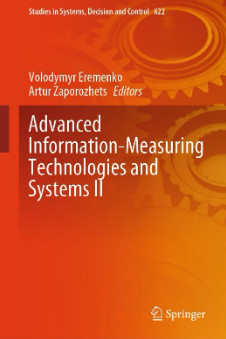 This book, the second volume of the book “Advanced Information-Measuring Technologies and Systems,” is a testament to the collaborative efforts of the Department of Information-Measuring Technologies of the National Technical University of Ukraine “Igor Sikorsky Kyiv Polytechnic Institute” and the General Energy Institute of the National Academy of Sciences of Ukraine. It presents the main scientific directions and issues of our joint research. The presented results of scientific research are not just solutions to classic problems of information and measurement technologies, but they also represent a leap into the future. The prediction of the metrological reliability of information and measurement systems, the features of the calibration of measuring devices and systems for measuring the parameters of electrical quantities, the development of methods for increasing the accuracy of coordinate and measurement systems and the accuracy of measuring the characteristics of harmonic signals in the time and frequency domain, the construction of software and hardware for measurement channels of systems, as well as applied tasks of information technologies—control of the fertilizer granulation process using fuzzy algorithms and chaos theory, and methods of using variable electromagnetic radiation for non-contact movement and processing of space debris, all showcase the ground breaking and exciting innovative potential of our research.
This book, the second volume of the book “Advanced Information-Measuring Technologies and Systems,” is a testament to the collaborative efforts of the Department of Information-Measuring Technologies of the National Technical University of Ukraine “Igor Sikorsky Kyiv Polytechnic Institute” and the General Energy Institute of the National Academy of Sciences of Ukraine. It presents the main scientific directions and issues of our joint research. The presented results of scientific research are not just solutions to classic problems of information and measurement technologies, but they also represent a leap into the future. The prediction of the metrological reliability of information and measurement systems, the features of the calibration of measuring devices and systems for measuring the parameters of electrical quantities, the development of methods for increasing the accuracy of coordinate and measurement systems and the accuracy of measuring the characteristics of harmonic signals in the time and frequency domain, the construction of software and hardware for measurement channels of systems, as well as applied tasks of information technologies—control of the fertilizer granulation process using fuzzy algorithms and chaos theory, and methods of using variable electromagnetic radiation for non-contact movement and processing of space debris, all showcase the ground breaking and exciting innovative potential of our research.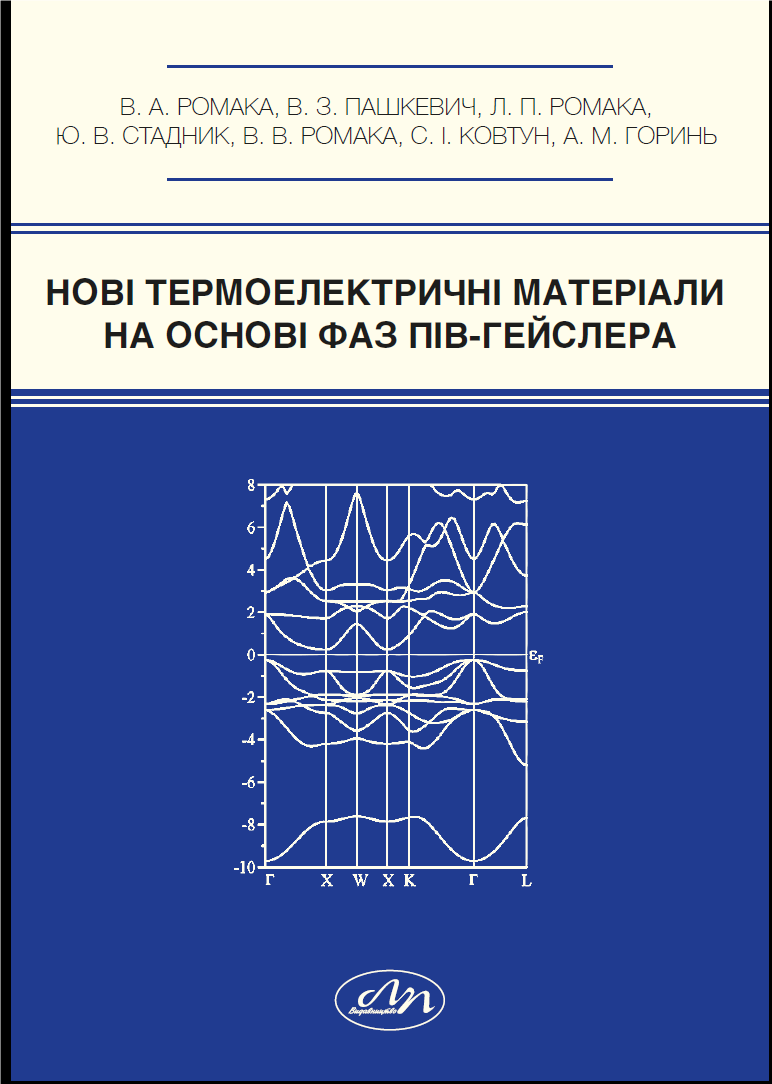
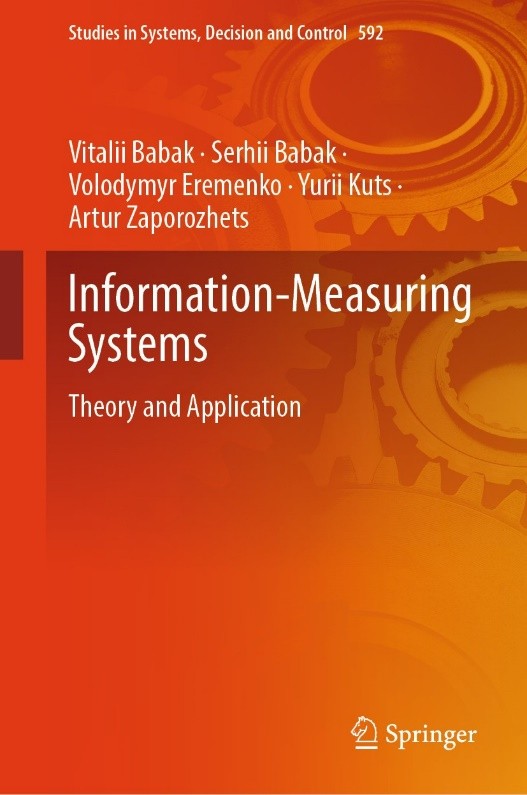 This book concentrates on virtual IMS with the use of modern information and measurement modeling technologies. Modern IMS can be implemented as: real hardware and software measuring tools; virtual IMS with the use of modern information and measurement modeling technologies, including simulation, mathematical, physical, with extensive use of computer equipment for conducting a simulation measurement experiment. Compared to real ones, virtual IMS has a number of advantages, and their implementation requires less time, production, and financial costs. However, in a number of cases, due to the information uncertainty of the object of measurement, such IMS cannot provide objective and reliable results, and therefore, it is necessary to conduct a full-scale measurement experiment using real systems. The potential capabilities of modern systems at the stage of information development of society have increased significantly, which contributes both to the expansion of the subject areas of their application and their use to increase the efficiency of known and solve new scientific and applied measurement tasks. The authors are in solidarity with other colleagues – specialists in measurements – in the forecasts of the development of IMS. No improvements in measurement information technologies, including computer and intellectual ones, have not led, are not leading, and obviously cannot lead in future to the expansion of the nomenclature of measurements of quantities while there are no corresponding sensors that form primary information during their direct interaction with the research object. Further development of IMS and their use in various fields of science and technology, including quantum metrology and nanotechnology, will largely be determined by the development of new principles of operation and the creation of new types of sensors based on them.
This book concentrates on virtual IMS with the use of modern information and measurement modeling technologies. Modern IMS can be implemented as: real hardware and software measuring tools; virtual IMS with the use of modern information and measurement modeling technologies, including simulation, mathematical, physical, with extensive use of computer equipment for conducting a simulation measurement experiment. Compared to real ones, virtual IMS has a number of advantages, and their implementation requires less time, production, and financial costs. However, in a number of cases, due to the information uncertainty of the object of measurement, such IMS cannot provide objective and reliable results, and therefore, it is necessary to conduct a full-scale measurement experiment using real systems. The potential capabilities of modern systems at the stage of information development of society have increased significantly, which contributes both to the expansion of the subject areas of their application and their use to increase the efficiency of known and solve new scientific and applied measurement tasks. The authors are in solidarity with other colleagues – specialists in measurements – in the forecasts of the development of IMS. No improvements in measurement information technologies, including computer and intellectual ones, have not led, are not leading, and obviously cannot lead in future to the expansion of the nomenclature of measurements of quantities while there are no corresponding sensors that form primary information during their direct interaction with the research object. Further development of IMS and their use in various fields of science and technology, including quantum metrology and nanotechnology, will largely be determined by the development of new principles of operation and the creation of new types of sensors based on them.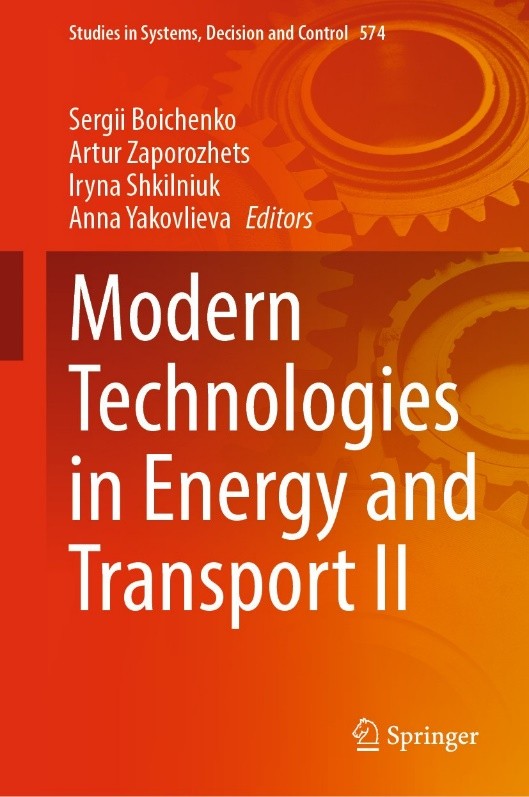
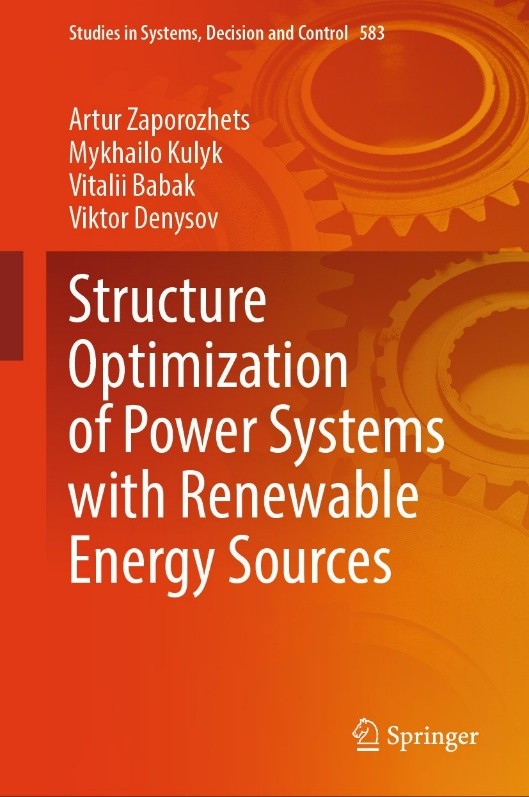 This book develops a method for economic-technological forecasting of the optimal functioning and parameters of the energy system. The relevance of this work is determined by current trends and challenges in the field of energy and sustainable development, considering the following key points: 1. transition to renewable energy: Optimizing the structure of integrated energy systems with a focus on renewable energy sources and distributed generation is crucial for achieving sustainable development goals and mitigating climate change. 2. Technological progress: Continuous advancements in generation technologies, energy storage, and smart grid development provide new opportunities for the optimal integration of renewable energy into existing and new energy systems. Models and tools that can promptly track the variability and intermittency of renewable sources are essential for making optimal management decisions to ensure the reliability and resilience of energy systems. 3. Environmental impact: Optimizing energy systems using renewable sources helps reduce greenhouse gas emissions and minimize negative environmental impacts. 4. Integration of energy storage: Effective use of energy storage technologies is a key aspect of optimizing energy systems with a high share of renewable energy sources. Models that address the optimal integration of energy storage (batteries) and demand response strategies are crucial for maintaining the stability of electricity generation and supply. 5. Social significance: Research into models and means of optimizing the implementation of renewable energy can contribute to creating effective scenarios. 6. Economic competitiveness: Reducing the costs of renewable energy technologies combined with the potential savings from optimizing the operation modes of traditional generation makes the integration of renewable energy economically attractive. Thus, the task of developing new and improving existing methods and economic-mathematical models for studying the directions and optimal parameters of the technological development of energy system elements is a relevant scientific problem that needs to be addressed.
This book develops a method for economic-technological forecasting of the optimal functioning and parameters of the energy system. The relevance of this work is determined by current trends and challenges in the field of energy and sustainable development, considering the following key points: 1. transition to renewable energy: Optimizing the structure of integrated energy systems with a focus on renewable energy sources and distributed generation is crucial for achieving sustainable development goals and mitigating climate change. 2. Technological progress: Continuous advancements in generation technologies, energy storage, and smart grid development provide new opportunities for the optimal integration of renewable energy into existing and new energy systems. Models and tools that can promptly track the variability and intermittency of renewable sources are essential for making optimal management decisions to ensure the reliability and resilience of energy systems. 3. Environmental impact: Optimizing energy systems using renewable sources helps reduce greenhouse gas emissions and minimize negative environmental impacts. 4. Integration of energy storage: Effective use of energy storage technologies is a key aspect of optimizing energy systems with a high share of renewable energy sources. Models that address the optimal integration of energy storage (batteries) and demand response strategies are crucial for maintaining the stability of electricity generation and supply. 5. Social significance: Research into models and means of optimizing the implementation of renewable energy can contribute to creating effective scenarios. 6. Economic competitiveness: Reducing the costs of renewable energy technologies combined with the potential savings from optimizing the operation modes of traditional generation makes the integration of renewable energy economically attractive. Thus, the task of developing new and improving existing methods and economic-mathematical models for studying the directions and optimal parameters of the technological development of energy system elements is a relevant scientific problem that needs to be addressed.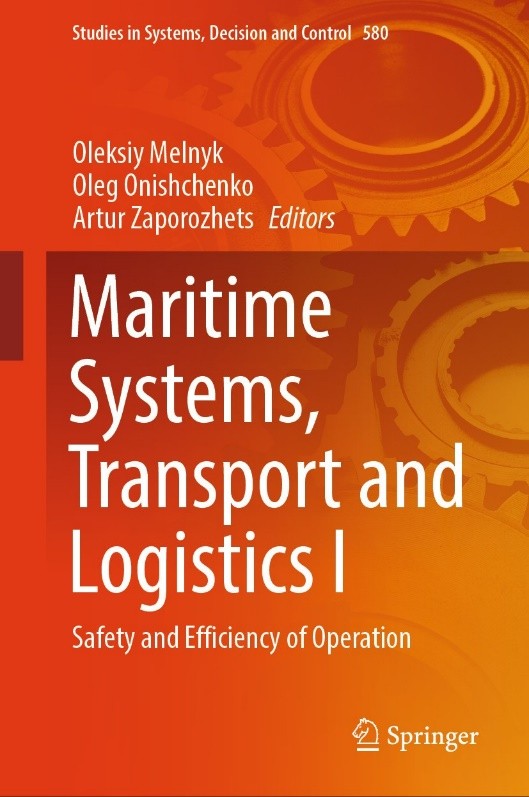 This book presents a comprehensive analysis of the safe operation of maritime transportation, focusing on the integration of advanced methodologies and frameworks to improve safety and efficiency. The book covers a wide range of topics, including the application of formal safety assessment (FSA), the influence of human factors in risk management, and the use of project-oriented approaches in the management of maritime operations. Synthesizing existing knowledge with innovative practices, valuable insights into safety-related problems and solutions in the maritime industry are offered, serving as an essential resource for maritime transportation professionals, researchers, and policymakers, contributing to the development of safer and more efficient maritime transportation systems.
This book presents a comprehensive analysis of the safe operation of maritime transportation, focusing on the integration of advanced methodologies and frameworks to improve safety and efficiency. The book covers a wide range of topics, including the application of formal safety assessment (FSA), the influence of human factors in risk management, and the use of project-oriented approaches in the management of maritime operations. Synthesizing existing knowledge with innovative practices, valuable insights into safety-related problems and solutions in the maritime industry are offered, serving as an essential resource for maritime transportation professionals, researchers, and policymakers, contributing to the development of safer and more efficient maritime transportation systems.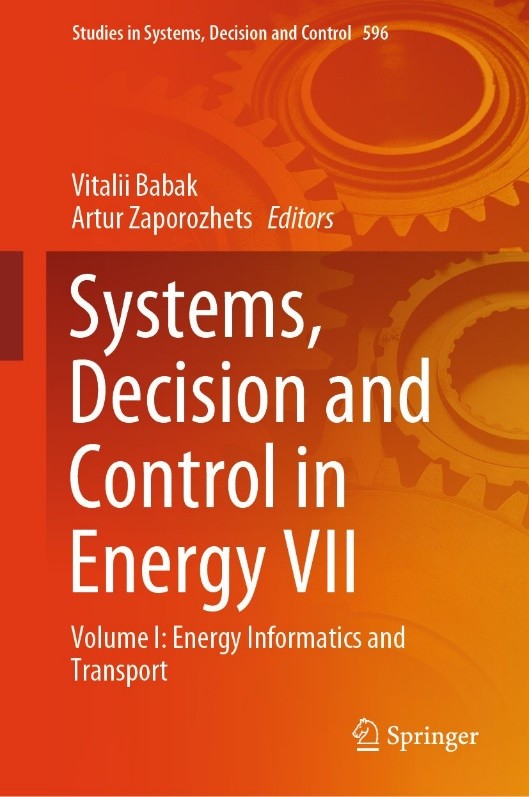 This book presents a curated selection of contemporary research, capturing the progress of Ukrainian and international scientists in addressing the complex issues surrounding energy systems, sustainable fuels, and efficient transport solutions. The world’s growing energy demands, coupled with pressing environmental concerns, present significant challenges and opportunities in the energy sector. The advancements within this sector are increasingly driven by innovations in technology, information systems, and cross-disciplinary research efforts. Through this collaborative scientific endeavor, the authors aim to offer a holistic view of current advancements and innovative solutions in three core areas: energy informatics, fuels, and transport. Energy informatics integrates data analytics, digital infrastructure, and real-time monitoring to improve energy efficiency and support sustainable energy transitions. The works presented in this section illustrate how the integration of cutting-edge computational models, artificial intelligence, and big data analytics is enabling smarter, more adaptive energy systems. Topics covered include optimization of energy consumption, predictive modeling for energy needs, and the development of robust frameworks to manage and process vast amounts of energy-related data. This section highlights how energy informatics serves as a foundational tool in meeting the evolving demands for efficient and sustainable energy.
This book presents a curated selection of contemporary research, capturing the progress of Ukrainian and international scientists in addressing the complex issues surrounding energy systems, sustainable fuels, and efficient transport solutions. The world’s growing energy demands, coupled with pressing environmental concerns, present significant challenges and opportunities in the energy sector. The advancements within this sector are increasingly driven by innovations in technology, information systems, and cross-disciplinary research efforts. Through this collaborative scientific endeavor, the authors aim to offer a holistic view of current advancements and innovative solutions in three core areas: energy informatics, fuels, and transport. Energy informatics integrates data analytics, digital infrastructure, and real-time monitoring to improve energy efficiency and support sustainable energy transitions. The works presented in this section illustrate how the integration of cutting-edge computational models, artificial intelligence, and big data analytics is enabling smarter, more adaptive energy systems. Topics covered include optimization of energy consumption, predictive modeling for energy needs, and the development of robust frameworks to manage and process vast amounts of energy-related data. This section highlights how energy informatics serves as a foundational tool in meeting the evolving demands for efficient and sustainable energy.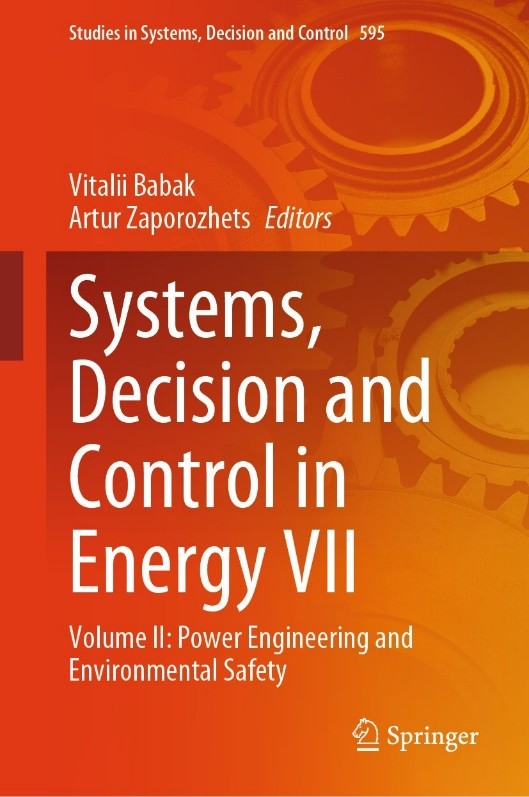 This book explores the intricate interplay between burgeoning energy demands and the imperatives of ecological sustainability. The first section, Electric Power Engineering, explores critical innovations in the generation, transmission, and distribution of electric power. As global energy demands rise, the development of efficient and reliable electric power systems becomes essential. This section includes studies on optimizing grid performance, enhancing resilience, and integrating smart grid technologies. Advances in grid automation, energy storage, and demand response are examined, reflecting the shift toward adaptive, efficient, and secure power systems.
This book explores the intricate interplay between burgeoning energy demands and the imperatives of ecological sustainability. The first section, Electric Power Engineering, explores critical innovations in the generation, transmission, and distribution of electric power. As global energy demands rise, the development of efficient and reliable electric power systems becomes essential. This section includes studies on optimizing grid performance, enhancing resilience, and integrating smart grid technologies. Advances in grid automation, energy storage, and demand response are examined, reflecting the shift toward adaptive, efficient, and secure power systems.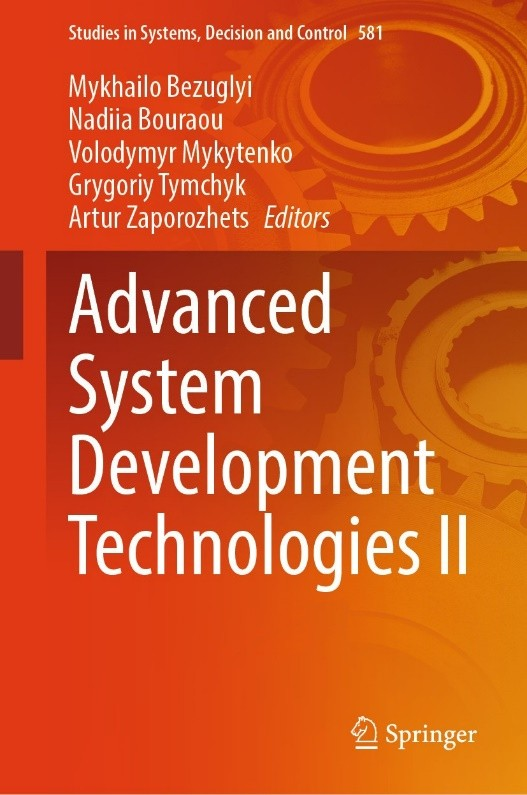
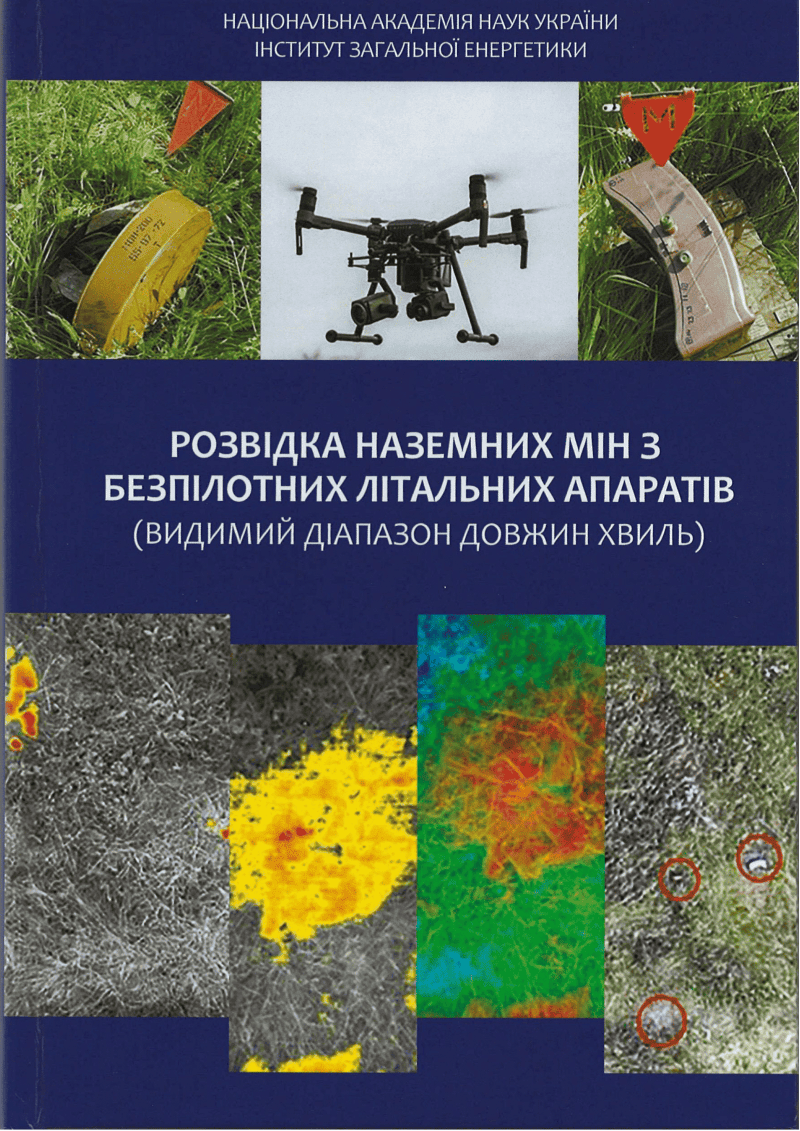
 This book examines issues of improving the efficiency of the control technological parameters of textile materials through with computerized systems with the application of non-contact methods as only they allow to react quickly to changes of technological parameters during production. The original models, algorithms, software and hardware of the developed system for the control technological parameters of textile materials are presented. Also, the book presents new methods for measuring the technological parameters of textile materials, which do not need require taking into account the constant readjustment of the system to controlled samples of materials with different structure and porosity. The developed model of the computerized system allows contactless control of basis weight and porosity of fabrics in the course of their production. This book contains six chapters, for researchers, engineers, as well as lecturers and postgraduates of higher education institutions dealing with ultrasonic control engineering equipment.
This book examines issues of improving the efficiency of the control technological parameters of textile materials through with computerized systems with the application of non-contact methods as only they allow to react quickly to changes of technological parameters during production. The original models, algorithms, software and hardware of the developed system for the control technological parameters of textile materials are presented. Also, the book presents new methods for measuring the technological parameters of textile materials, which do not need require taking into account the constant readjustment of the system to controlled samples of materials with different structure and porosity. The developed model of the computerized system allows contactless control of basis weight and porosity of fabrics in the course of their production. This book contains six chapters, for researchers, engineers, as well as lecturers and postgraduates of higher education institutions dealing with ultrasonic control engineering equipment.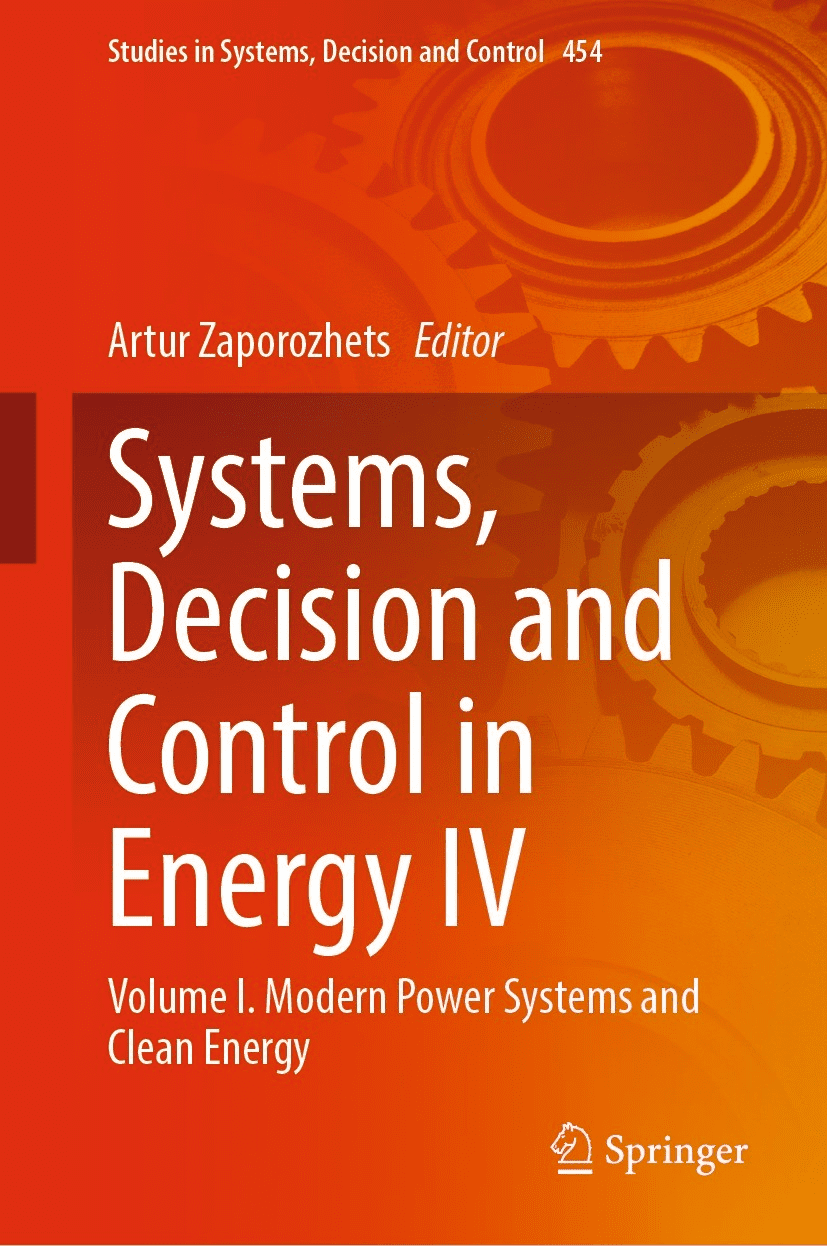
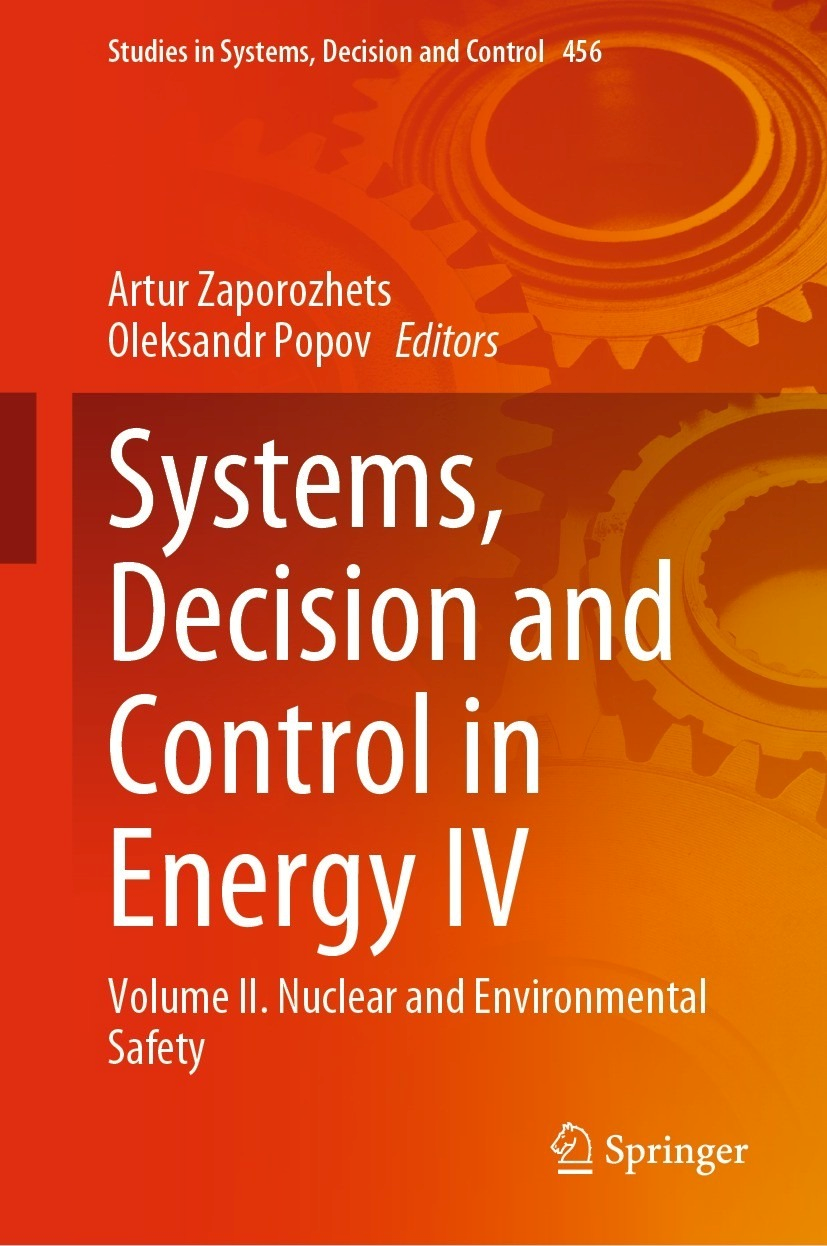
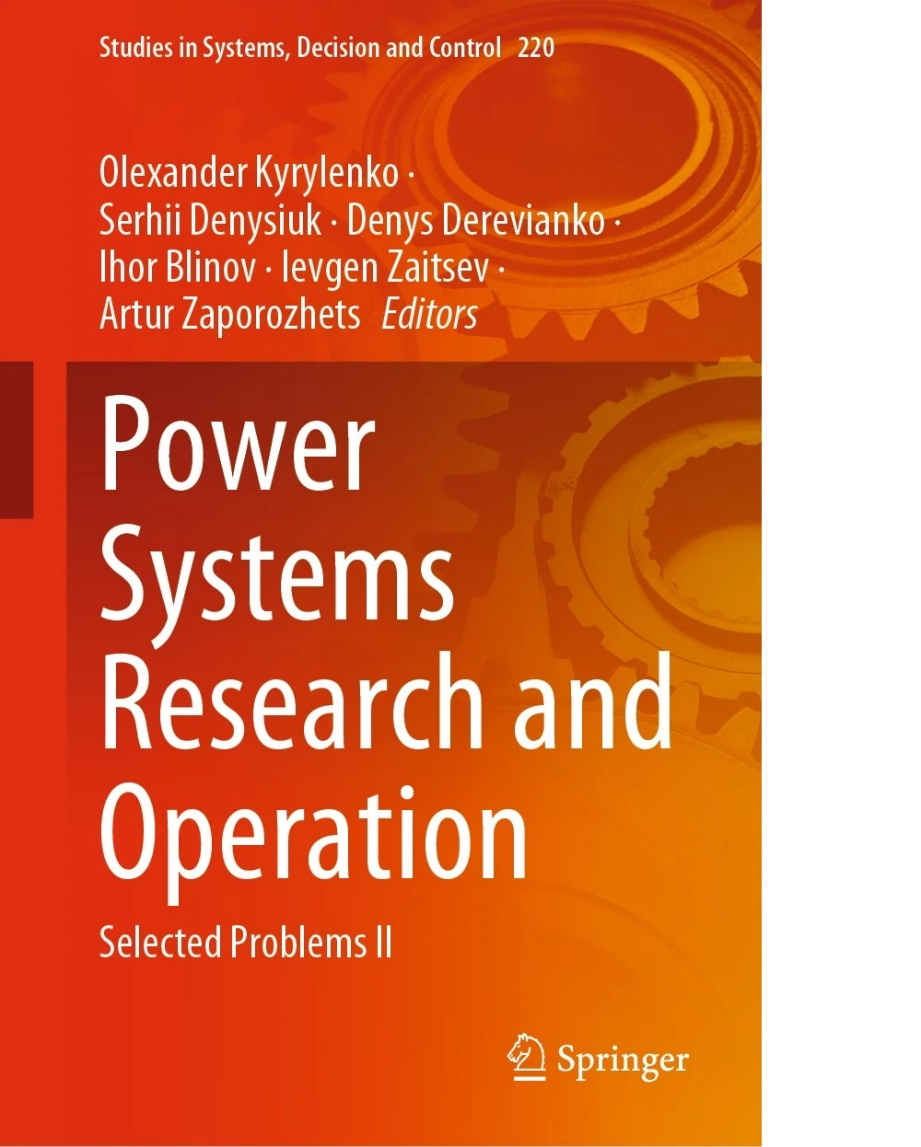 The book examines the problems in the fields of power systems functioning, optimization of operating modes of electric power facilities and their control systems, information and measuring systems and metrological support in the electric power industry, ensuring the functioning of the electric power system in the conditions of a competitive market of the electric power. The book is devoted to modern problems ensuring operational reliability and safety of objects integrated power system of Ukraine in the areas such as distribution systems automation, forecasting and optimization of energy processes with solar power plants, hydropower plants and other plants, and development solutions for smart monitoring systems for DERs. The presented research results in the book allow to increase the reliability and efficiency of operation of energy facilities and ensure the stability of power systems, the introduction of effective methods and tools for forecasting electricity supply and optimize power systems taking into constraints in modern of electricity markets. The book consists of 14 chapters. The book is for researchers, engineers, as well as lecturers and postgraduates of higher education institutions dealing with problems of operation, control, diagnosis and monitoring of integrated power system, power equipment, and other.
The book examines the problems in the fields of power systems functioning, optimization of operating modes of electric power facilities and their control systems, information and measuring systems and metrological support in the electric power industry, ensuring the functioning of the electric power system in the conditions of a competitive market of the electric power. The book is devoted to modern problems ensuring operational reliability and safety of objects integrated power system of Ukraine in the areas such as distribution systems automation, forecasting and optimization of energy processes with solar power plants, hydropower plants and other plants, and development solutions for smart monitoring systems for DERs. The presented research results in the book allow to increase the reliability and efficiency of operation of energy facilities and ensure the stability of power systems, the introduction of effective methods and tools for forecasting electricity supply and optimize power systems taking into constraints in modern of electricity markets. The book consists of 14 chapters. The book is for researchers, engineers, as well as lecturers and postgraduates of higher education institutions dealing with problems of operation, control, diagnosis and monitoring of integrated power system, power equipment, and other.